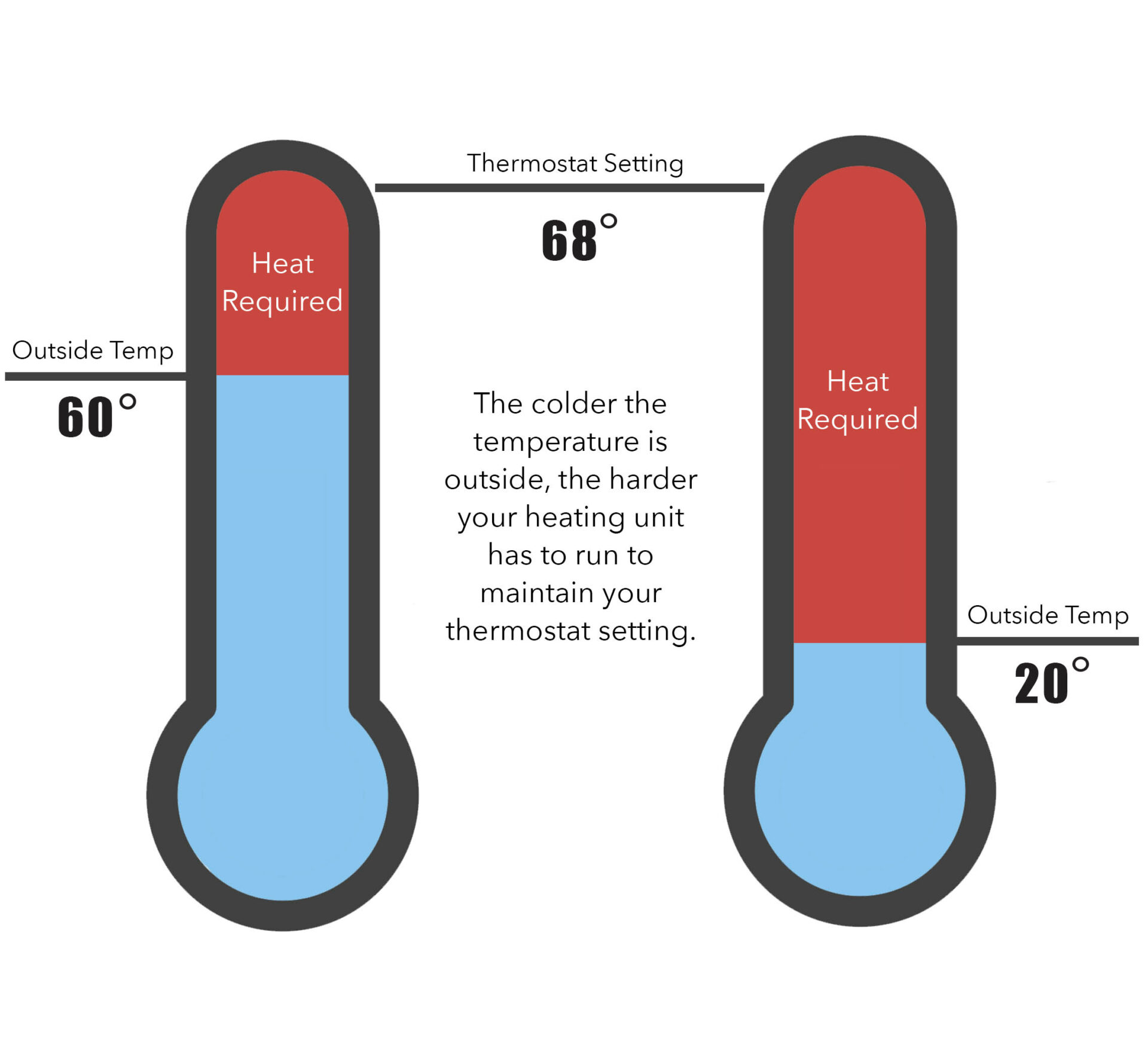11 Jan Understanding and managing wintertime energy use
On average, in an all-electric home, 50-70% of your monthly energy cost is from heating, cooling, and water heating. Simple yet impactful changes in how you use energy could help make a difference not only during the winter months but throughout the year.
First, understanding how colder temperatures affect how much energy you use can also help with understanding its effects on the electric bill.
When outside temperatures are 60 degrees, and the thermostat is set to 68 degrees, the heating unit overcomes a moderate 8-degree range between temperatures outside and inside the house.
However, when outside temps are 20 degrees, and the thermostat is at 68, this difference is then 48 degrees. This significant difference will impact how much energy is used to keep your home warm.
The colder it gets, the more a heating unit will operate to maintain the temperature setting inside your home. In some extreme cases, the central unit will operate (or cycle) more, and oftentimes the emergency heat also comes on. When factoring in the efficiency of the unit, the level of attic and wall insulation in your home, and the condition of the ductwork, extreme winter temperatures could result in electric bills being higher than expected.
To better manage energy use:
- Adjust the thermostat for energy savings. It is recommended by TVA’s EnergyRight program to set the thermostat to 68 degrees during winter months, but you should do what’s best for your household. (Even if you have a non-electric central unit, it may have electric blowers, which also contribute to overall electric use.)
- Consider insulating the electric water heater. Installing a water heater jacket (wrap or blanket) could reduce standby heat loss and save on water heating costs year-round. Insulating the electric water heater is an easy, inexpensive project, and pre-cut water heater jackets or blankets can be purchased at most home improvement stores. Before insulating the water heater, check with the manufacturer’s guidelines.
Winter months can bring some of the highest energy bills of the year. Combining these tips with those below can help you begin efforts to be more energy efficient.
Visit energyright.com for more tips and energy-saving advice for your home or business.
OTHER THINGS YOU CAN DO
to feel warmer during cold weather
- Run ceiling fans to move the air. Ceiling fans should turn clockwise slowly in winter to circulate warmer air from the ceiling (as heat naturally rises).
- Seal gaps around doors and windows to prevent cold air from penetrating the home.
- Open blinds and/or curtains to let the sunlight in during the day. The natural sunlight will help warm your home. Close blinds and/or curtains at night to help insulate against the cold.
- Leave the oven open after baking, but don’t leave it on. You can take advantage of the remaining heat inside the oven.
- Add layers of clothing, wear thick socks, and bundle up under blankets to stay warm – especially if you’re adjusting the thermostat lower to save energy.
- If you have hard-surface floors, consider using area rugs to help block the cold drafts that may come from underneath the house.

